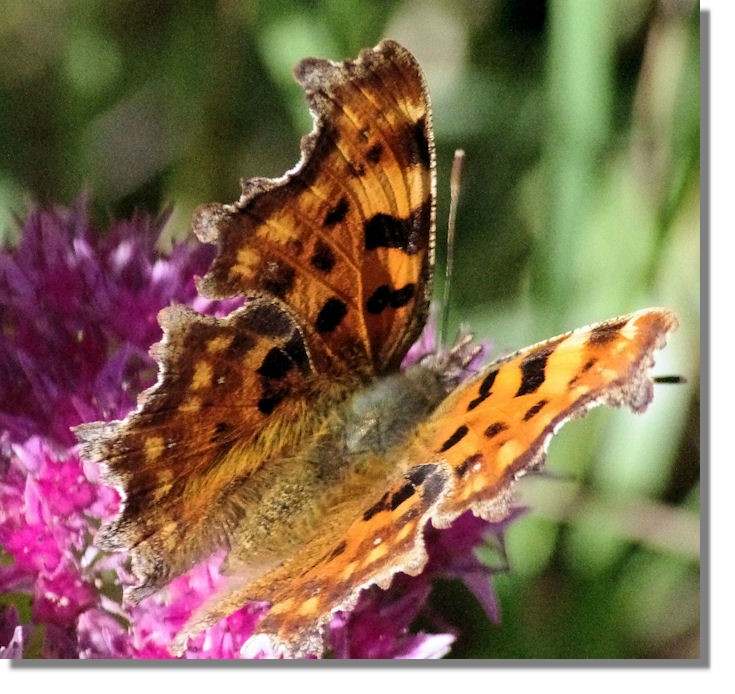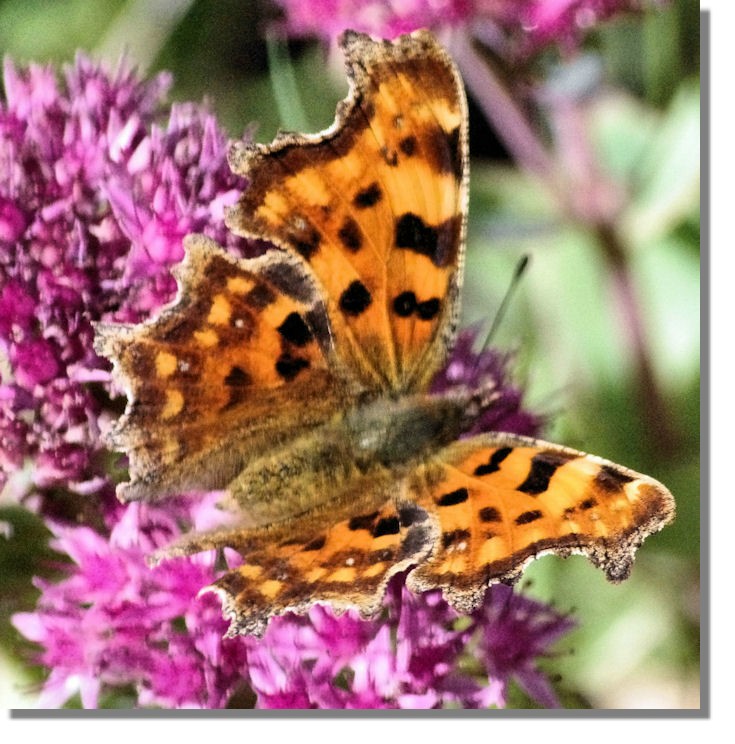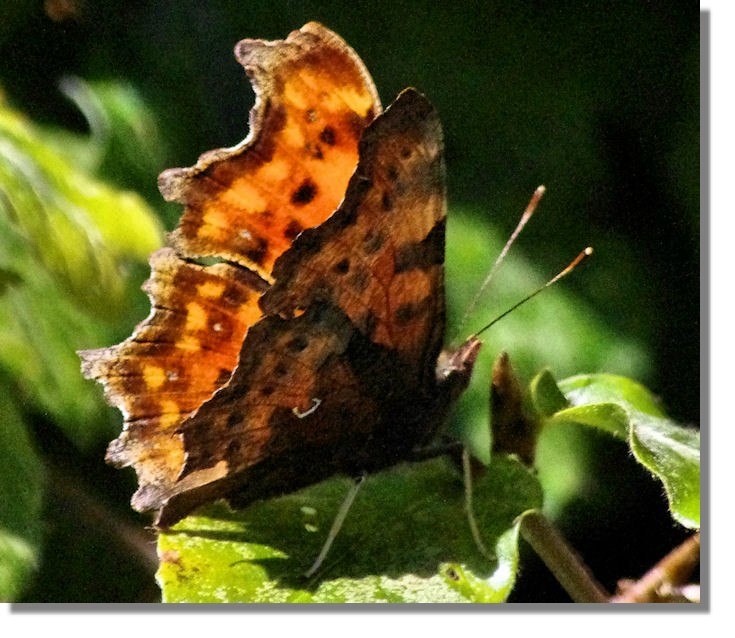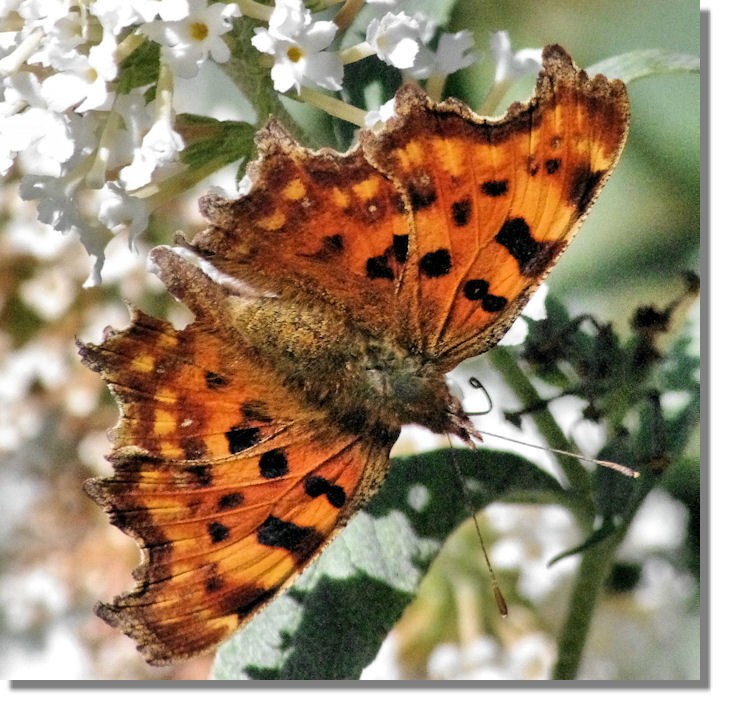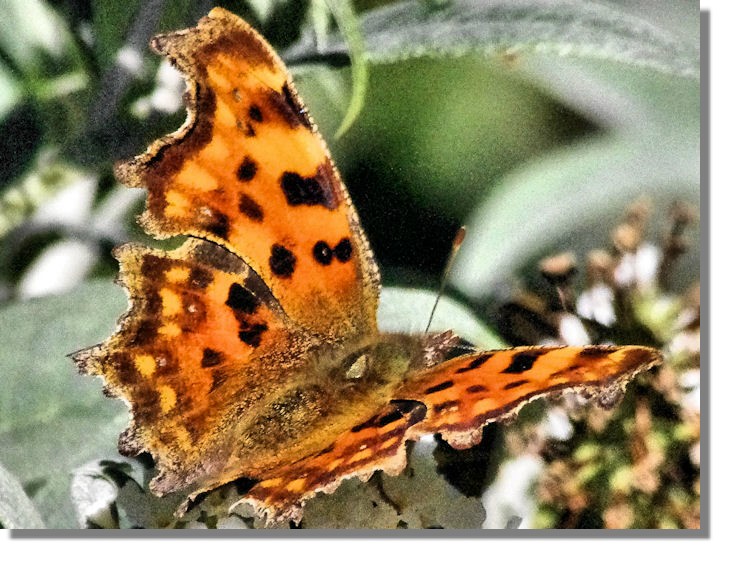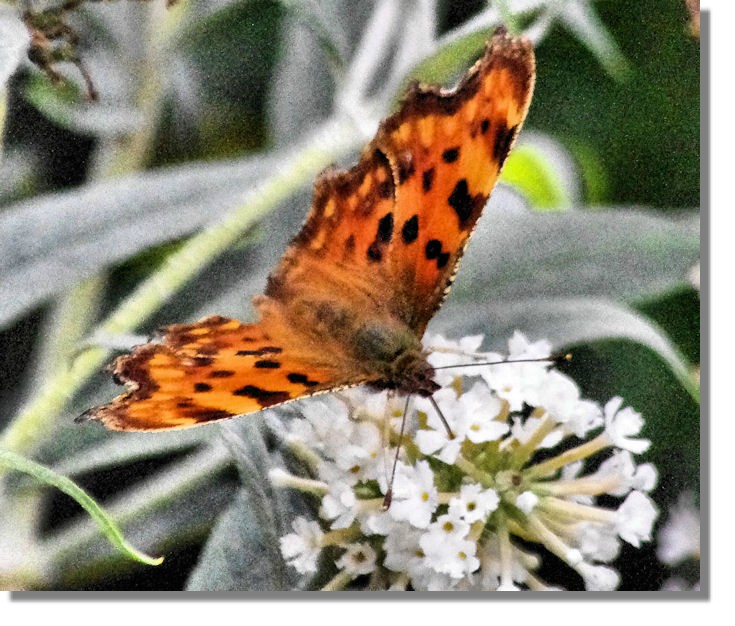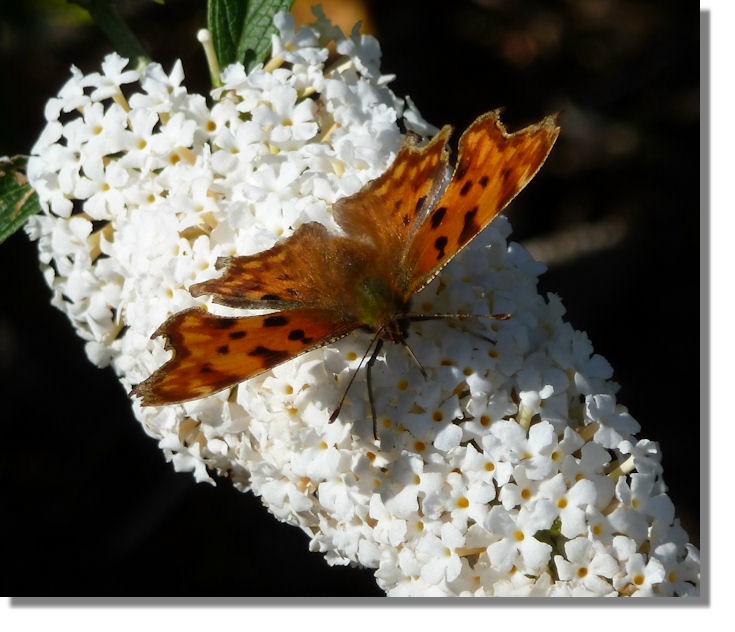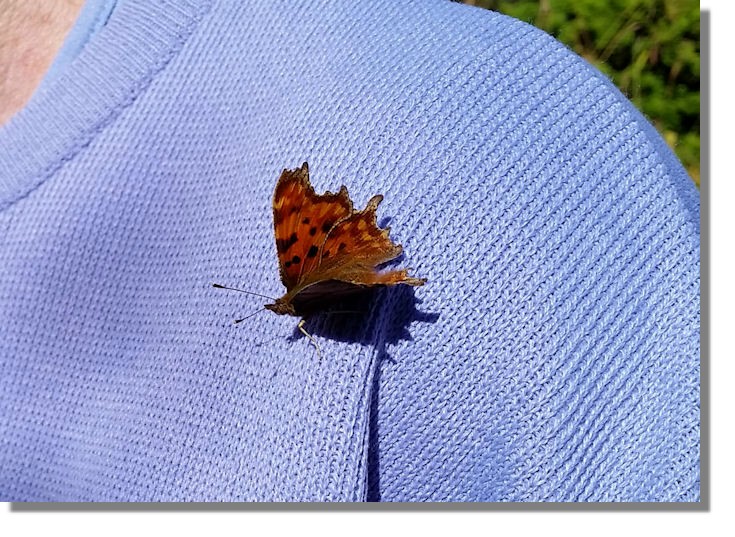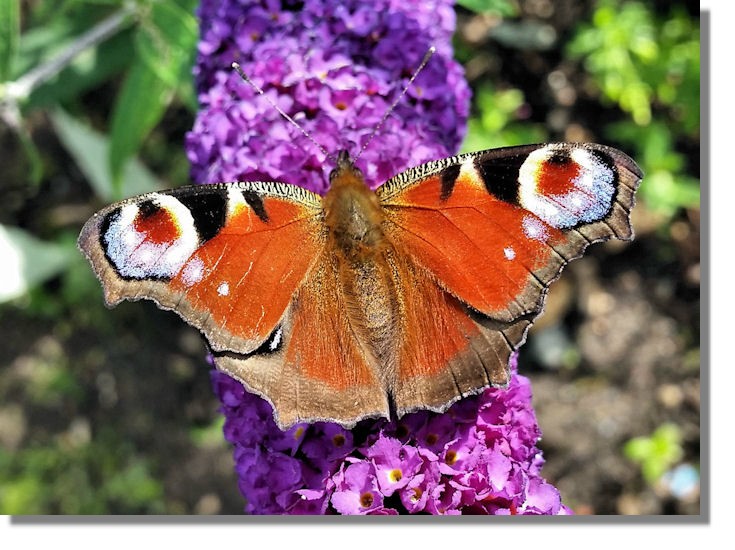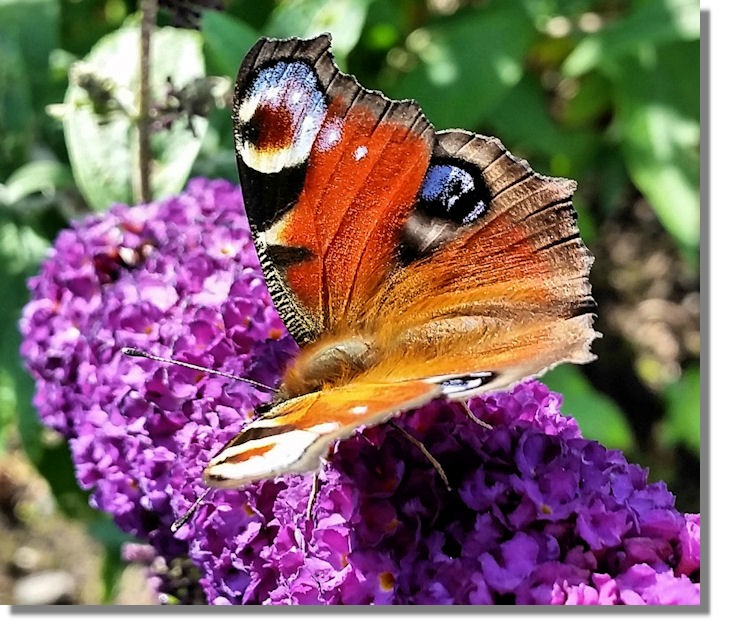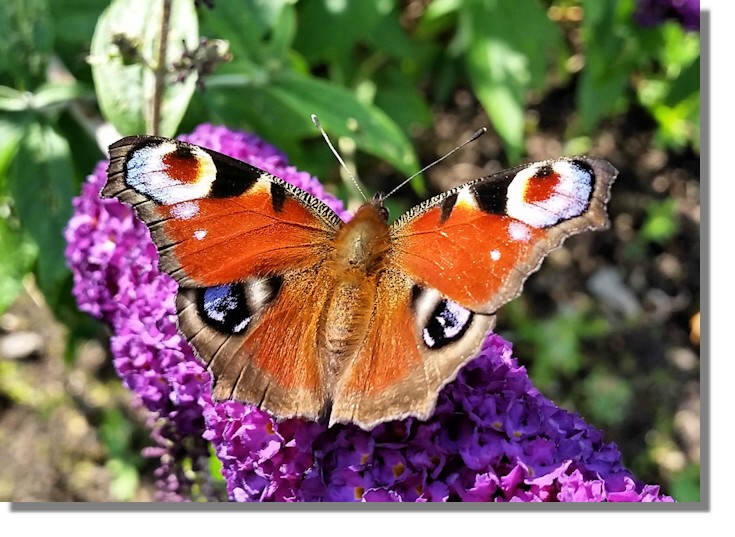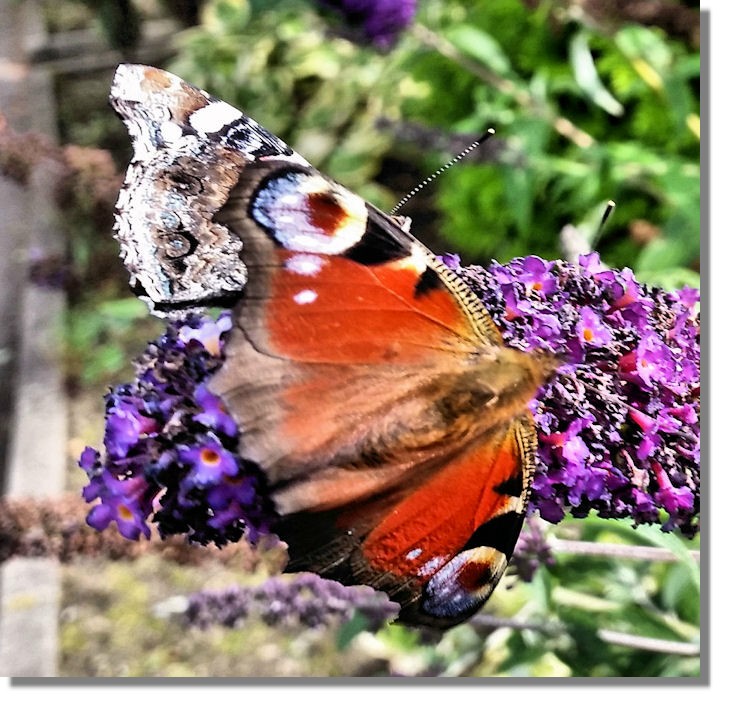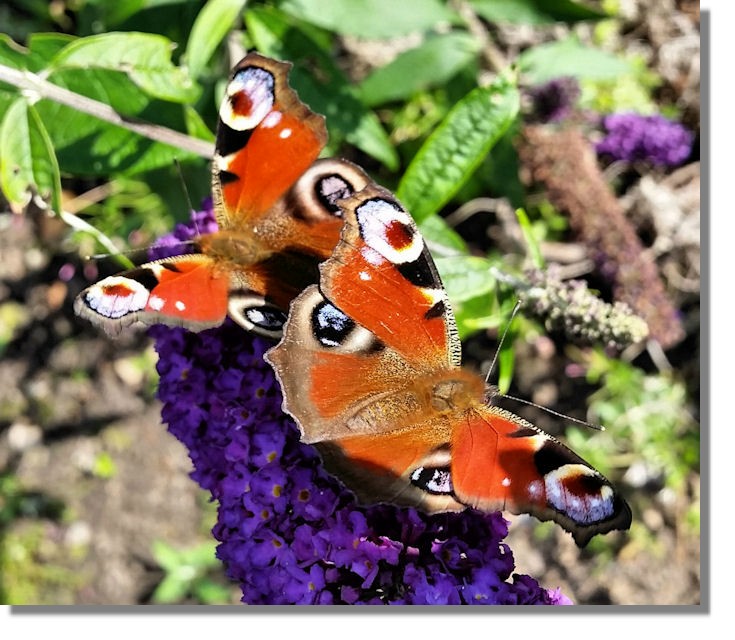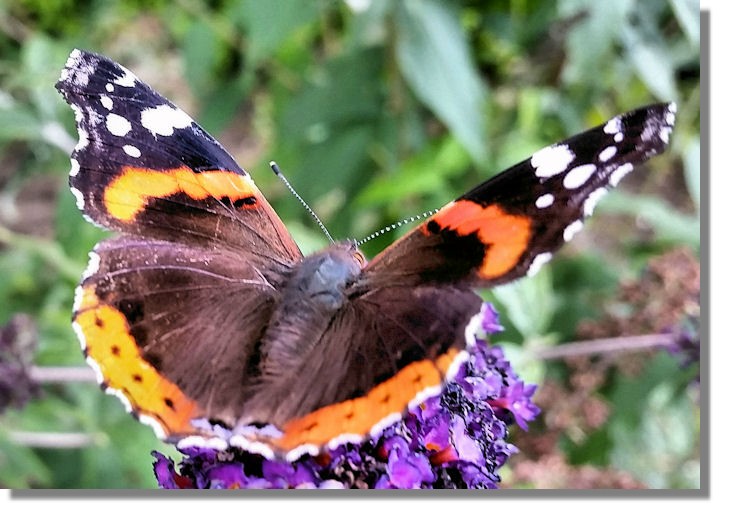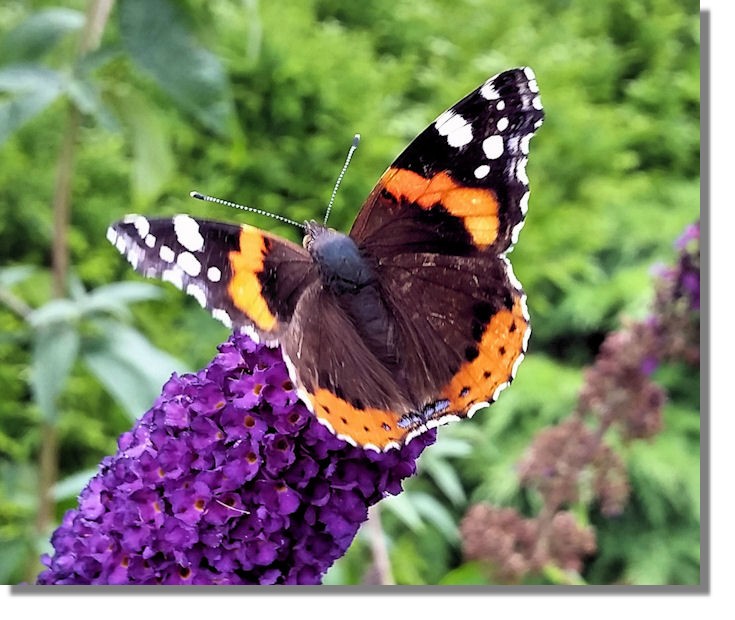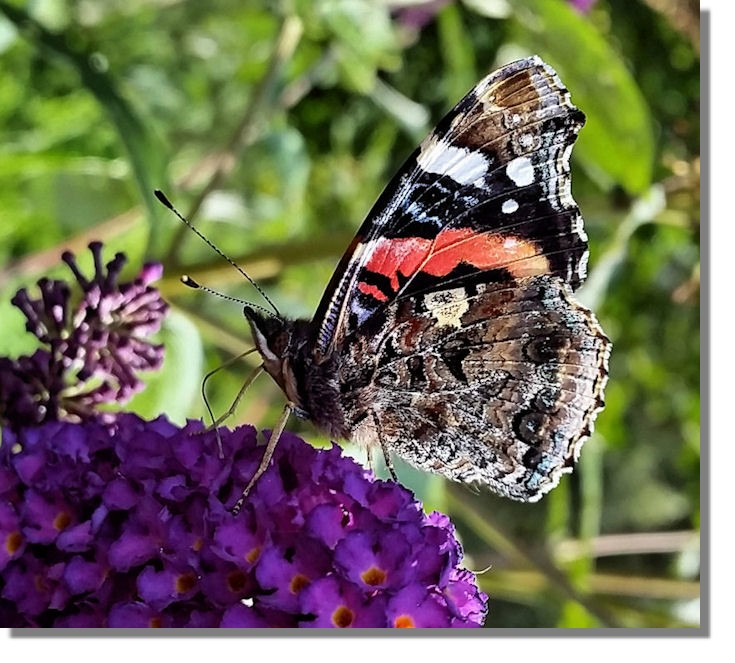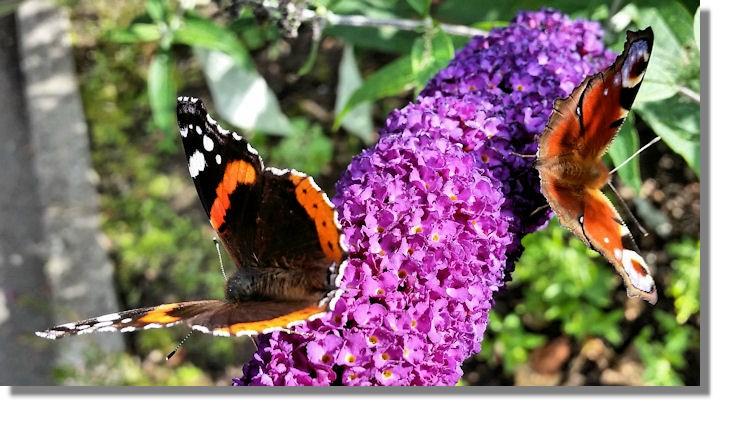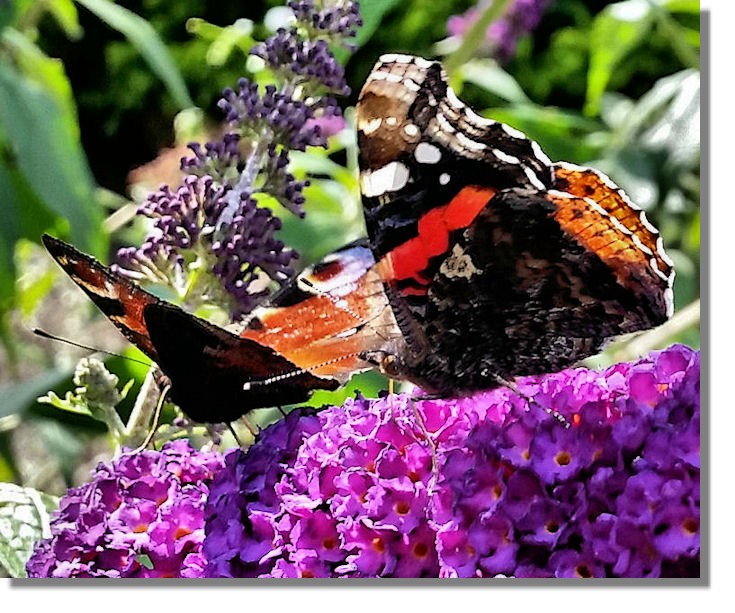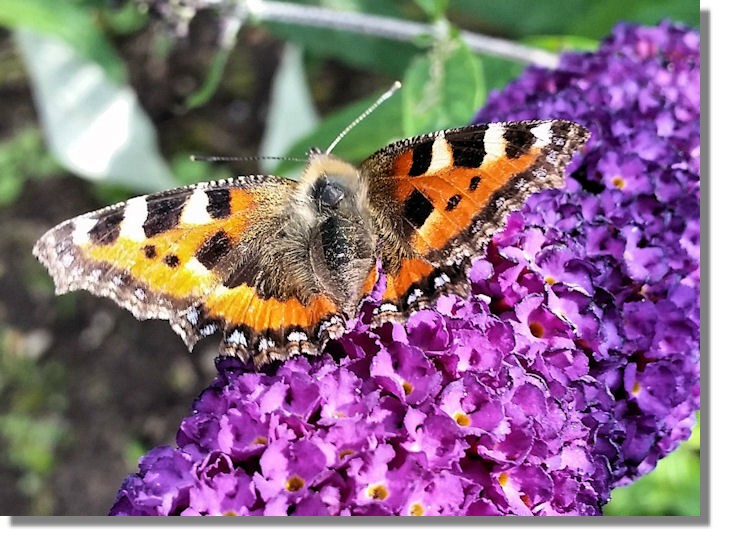Scottie's Monthly Photo Diary
- August Butterflies
Background
I never go anywhere in Scotland without my camera and I take photographs wherever I go. Sometimes I go somewhere specifically to take photographs with a view to adding another page to the Rampant Scotland site. On other occasions I just see something that makes an attractive picture or else it's another graphic to add to the library to perhaps use on a future occasion. This is a selection of the best photographs I took in the second half of May 2011 with a commentary on each one. It thus forms a pictorial diary of my travels during the month which can be shared by everyone! There's also a link to a slide show of the pictures on YouTube.
Comma Butterfly in My Own Garden
I saw a Comma butterfly for the first time ten years ago. They had been absent from Scotland for many years but global warming was allowing them to travel further north from England where they were often seen. Since then, I've seen them in a number of locations, more frequently in the east of Scotland than in the west. So it was great to be able to see and photograph one in my own garden where we have planted plants known to attract butterflies - any butterfly! Of course, it was my eagle-eyed wife who spotted it first and directed me to the exact location. The same butterfly (recognised by some damage to its wing) came back on three consecutive days - this graphic shows it on some Sedum on the final day (the white buddleja was no longer providing enough nectar for this butterfly).
Here's the Comma again on the Sedum flowers with its wings spread out this time as it enjoyed not only the nectar but the warmth of the sun on that day.
The Comma name derives from the white marking on the dark underside of its wing. The brown underside provides camouflage for hibernating as the wings look like dried leaves when folded. This picture was taken when the Comma flew up into a beech hedge - it was probably trying to get some warmth from the sun at that point.
This picture was taken on the first day we had seen the Comma in our garden. It had found some white buddleja (a popular name for this shrub is "Butterfly Bush") which still had some flower spikes - most of them had flowered earlier and started to wither.
Another view of the Comma on the Buddleja. The Comma's scalloped, ragged wings with black marks on an orange-black background make it a most attractive butterfly.
You can see the Comma's hollow "tongue" (called a proboscis) probing into one of the small flowers packed closely on the buddleja bush. The proboscis forms a food canal that the butterfly uses to suck up liquids.
Butterflies Drumpellier Country Park
Having seen Commas at Drumpellier in 2008, 2010, 2011, 2013, usually at the very end of August we were on the lookout for them again this year. There were a number of dull days at that time this year but at last on 31 August the sun shone and a Comma appeared, attracted by the white buddleja which the gardeners at Drumpellier planted a few years ago
Butterflies have a habit of landing on my wife and basking in the sun for a wee while. Which gives the perfect opportunity for a picture - especially as this Comma was not staying in one place for long anywhere else, making it very difficult to get any other pictures of it!
Earlier in August, on a particularly sunny day, there was a particularly large collection of butterflies a on a purple buddleja bush which had a good number of flower spikes still with nectar producing flower spikes. This picture and those below were all taken using my mobile phone camera. I usually use a separate camera with a good zoom capability but on this occasion the butterflies were so intent on feeding I was able to use the mobile phone as long as I moved it very slowly towards the butterflies to get close enough.
The Peacock's spectacular pattern of eyespots, evolved to startle or confuse predators, make it one of the most easily recognized and best known species. It is from these wing markings that the butterfly gained its common name.
The butterfly hibernates over winter in buildings, walls or trees before laying its eggs in early spring on the tips of vigorous nettle growth in full sun, in batches of up to 500 at a time. Thus in spring time older Peacock butterflies that have survived the winter (often looking the worse for wear) and newer, fresher looking butterflies can be seen at the same time.
This odd-looking picture arose because there is the underside of a Red Admiral butterfly with wings folded behind the Peacock as they both fed on the same flower spike.
After the mild winter and good spring I had expected this to be a good year for butterflies. But instead I have seen disappointingly few numbers this summer, apart from the ever-present Green Veined Whites. So it was particularly pleasing to find the sunshine bringing out so many butterflies that they had to compete for space. Sometimes, a flick of their wings would cause one of them to fly away but these two busily probed the buddleja flowers together.
The Red Admiral is a large butterfly (wingspan 6cm /2.4 inches) It is resident only in warmer areas, but migrates north in spring, and sometimes again in autumn. Its name is derived from the 18th century when it was known as "admirable".
The Red Admiral is a black/brown butterfly, with a flash of vivid orange-red across its forewings and around the edge of its rear wings and a splatter of white spots towards its wing-tips. It is a common sight in Scottish gardens during mid-late summer.
Unlike its colourful upper wings, the Red Admiral has undersides which are dark and mottled. This helps as camouflage when it hibernates in the winter, sometimes in old buildings or even garden sheds.
This shot clearly shows the different identifying features of the Red Admiral (on the left) and the Peacock (on the right)
It is possible that the Peacock butterfly is as yet unaware of the looming presence of the larger Red admiral behind!
Although on this occasion there were large numbers of Red Admirals and Peacock butterflies I was only able to spot one Small Tortoiseshell - seen here. There have been reports in recent years of a decline in numbers of Small Tortoiseshells in England but their numbers had held up well in Scotland so far.
If you want to read the other Diary entries going back to 2009, there is an Index page.

